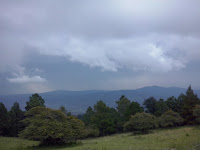Mazamitla.
Mexico is a beautiful country and ranks fourth among the most biodiverse countries. It has a large territorial richness and variety in their climates. Besides having different natural regions such as the rainforest, dry forest, desert, forest, grassland and marine region.
Those who have had the opportunity to visit Mexico most likely have gone to a beach, today I want to show a different but equally beautiful destination, I talk about Mazamitla.
Mazamitla is one of 125 municipalities of Jalisco and be one of the 7 magical towns of this state. Its name comes from Nahuatl and means "place where deer are hunted with arrows". It is sheltered by the wooded Sierra del Tigre, ideal for ecotourism and fresh air with a hint of pine.
Here you can enjoy a mountain cold weather, staying in cabins and warm up by the fireplace, go downtown to walk and eat some fruit or chayote with chili, lime and salt, buy canned or cheeses. Go to enjoy the scenery walking through the woods or ATV, climb the zip line or visit the Waterfall El Salto within the private gated Los Cazos, you can also choose different ecotourism tours offered.
This is another option that Mexico offers, do not hesitate to go and enjoy Mazamitla.









Comentarios
Publicar un comentario